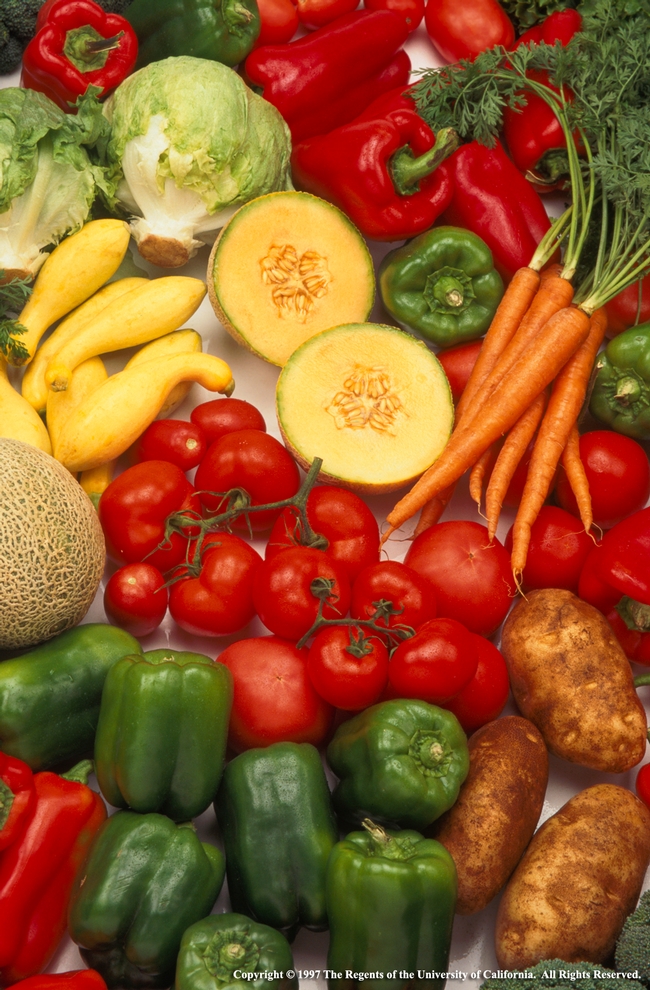Edible Landscaping
By Nancy Hartwick UCCE Master Gardener
I would like to grow some of my own food, but do not have room in my yard for a vegetable garden. Jill, Los Osos
Consider working food plants into your regular landscaping, which can be challenging, but rewarding. The major needs of all plants: adequate sun, water and fertilizer may be different for food plants than for landscape plants.
So first, look around for areas in your yard with good sun exposure. A minimum of 6 hours per day is needed for vegetables. There may be a seasonal variation of shade and the sun's angle. But that's OK because most vegetables last only one season and you will be replanting at different times of year.
Bear in mind the water needs of your landscape plants. If they are drought tolerant, you will have to practice hydro-zoning and place your food plants so watering them will not harm other plants. If your yard has a slope, you can plant water-lovers at a lower elevation so the water will drain away from the water-haters.
Vegetables require more nutrients and richer soil. You can accomplish this by amending the soil by adding 3o% compost. Thoroughly mix to a depth of 6 inches to two feet. This will help retain both nutrients and moisture. Then add a nitrogen fertilizer, slow release is best.
Fruit trees grow well near a south facing wall. Smaller or dwarf varieties are available for some fruits. Plant them where fruit drop will not cause problems near driveways or walks and be mindful of how chemical sprays for the fruit tree may damage nearby plants.
You may also vary the location of your plantings by incorporating trellised vines, hanging baskets or other containers. This will minimize the amount of yard space required and give you more creative planting options.
Pest control can be more important with food plants than with landscape plants. The concern goes beyond esthetics here. You don't want worms eating your tomatoes, but you must avoid using toxic substances on food plants. Always read the labels and follow the instructions carefully.
And lastly, have fun by mixing textures and colors to create a visually pleasant effect.
Next week we will discuss planting spring vegetables.
